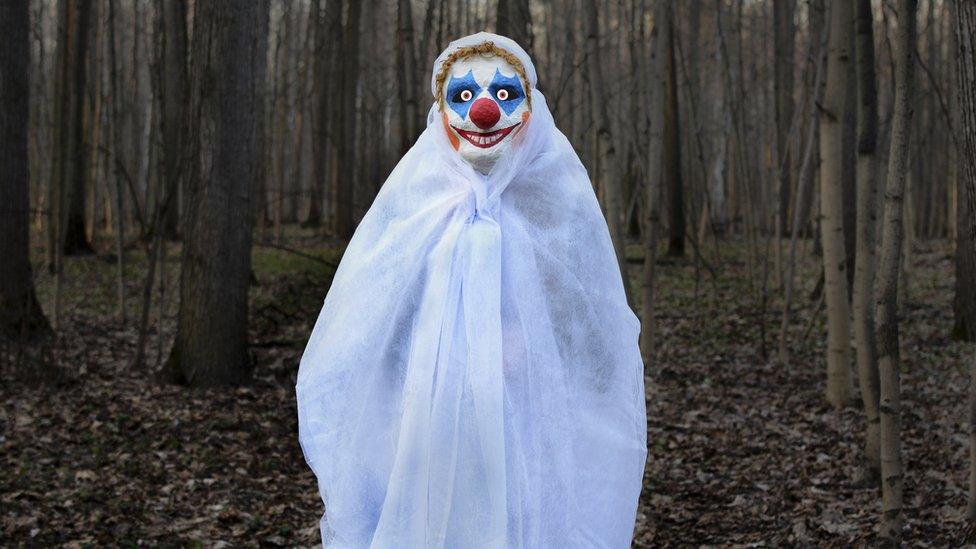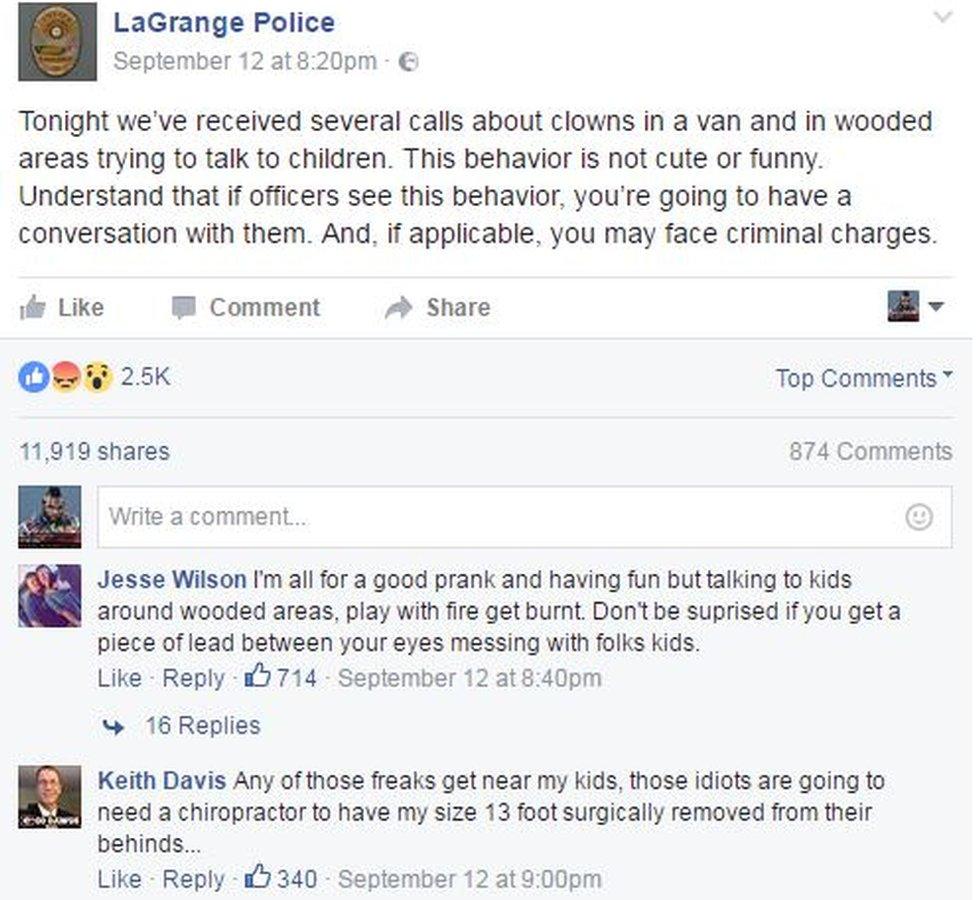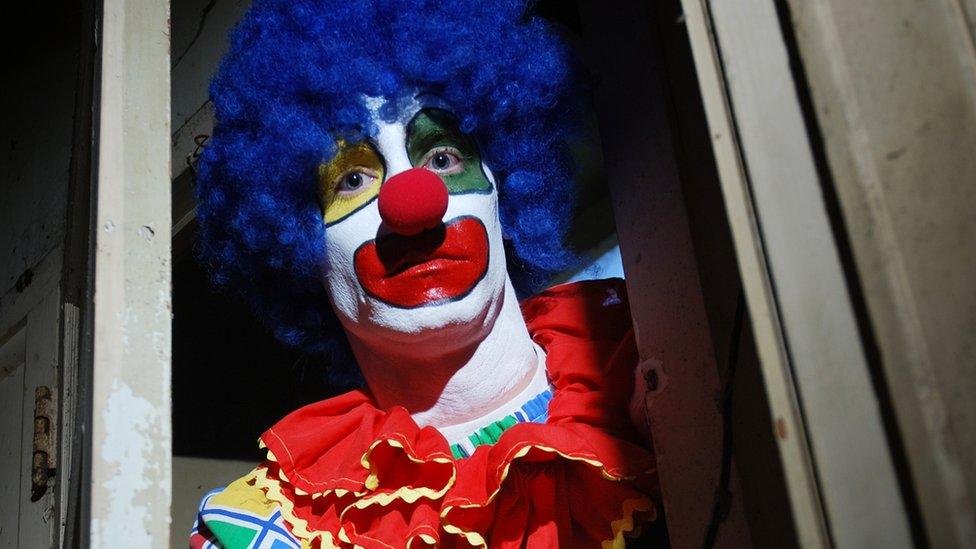Creepy nocturnal clown sightings leave US police baffled
- Published

Clown performers are unhappy about the negative media stories
Dozens of reported sightings of lurking creepy clowns have been flooding US police stations this summer.
Children claim the clowns have tried to lure them into the woods using money.
Nocturnal clowns have been spotted in at least six states, most recently in Georgia where two young boys ran in fear of their lives while waiting for the morning school bus.
Police have warned that even if this simply is a prank, criminal charges may still be filed.
"We saw a man with all black on, clown mask, and a red wig," 12-year-old Cameron Frails told WRDW News, external.
In nearby Aiken County, South Carolina, a radio scanner picked up this bizarre police despatch:
"Subject dressed in a red and yellow suit with a clown mask through the woods. He also had a green laser light shining it through windows."

Social media users have speculated that these encounters will end badly and could lead to a clown getting shot.
Spotting have occurred in Ohio, South Carolina, North Carolina, California, Wisconsin, and Georgia.
"The clowning around needs to stop," said Greenville, South Carolina police chief Ken Miller at a press conference earlier this month.
"It's illegal, it's dangerous, it's inappropriate, it's creating community concern," Chief Miller continued.
New Jersey State Police used the trend to warn the public, and lament that most criminals don't wear such obvious costumes.
"For all of the coulrophobics out there, we apologise for the pic, but it was necessary," the police wrote on Facebook alongside a creepy photo.
"If all of the bad people out there stuck out as much as a person dressed as a clown, we wouldn't have write posts like this," they conclude.

Legitimate clown performers are upset with the attention, since they already have several negative depictions to contend with.
The character Pennywise from the Stephen King series "IT", and the serial killer and amateur clown John Wayne Gacy, are just two examples of horrifying clowns.
At least one performer in Georgia has decided to inform police of his movements whenever in costume in order to avoid a public scare.
.
- Published3 November 2014

- Published30 August 2016
